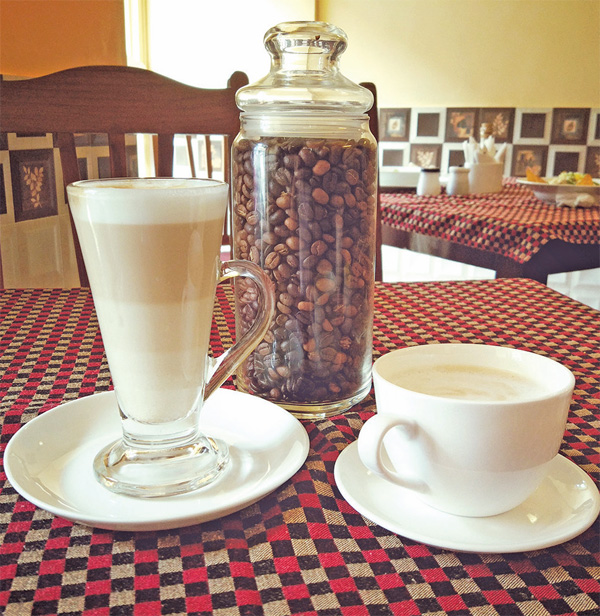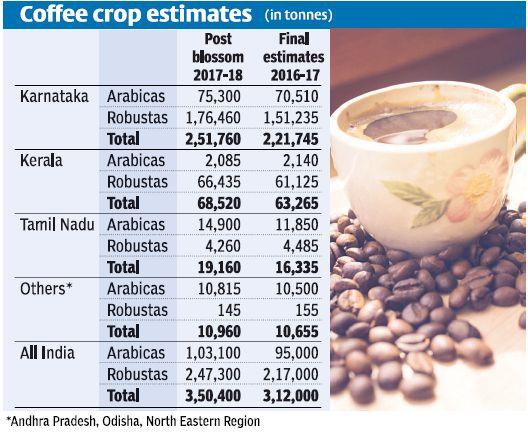Paying homage to International Coffee Day, Café looks at the trend of a rise in knowledgeable consumption of coffee, doing a little trail of some places known to serve a good brew, in the process

Coffee is probably man’s best friend, even ahead of canines.
Much like alcohol (although seemingly less sinister), it often guides many people through relationships, breakups, stressful times, late nights, early mornings…well, you get the drift. In more recent times, beyond the advent of the chains that glorify it with glitz, glamour, strange names and exorbitant price tags, there is a section of the population that craves it’s good ‘cuppa’, a section that has only been growing ever since quality of coffee available in Goa has improved.
But why look at this trend now, one might perhaps inquire. Simply put, International Coffee Day is an occasion to promote and celebrate coffee as a beverage, with events now occurring in places across the world. The first official date of October 1 was announced in 2015, as agreed by the International Coffee Organisation, and was launched in Milan. This day is also observed to promote fair trade coffee and to raise awareness for the plight of the coffee growers. So what better day to address this trend than today, with a little trail pointing out some of the places that provide quality coffee?
Formerly popular by the name of ‘Tamarin’, the new ‘gusto!’ delicatessen is setting a benchmark for itself by becoming the only stockist in Goa of the renowned ‘Black Baza’, 100% biodiversity-friendly, coffee. Set in the heart of Calangute’s ‘Gauravaddo’ at ‘Literati Bookshop’, the establishment has opted to work closely with this coffee because, as the good people at ‘gusto!’ say, Black Baza’s vision fits perfectly with their concepts. It’s a world where coffee farms conserve biodiversity, and all producers have secure and stable livelihoods. Working with over 200 farmers in the BR Hills and Kodagu, Baza is the largest specialty coffee collective in India.
Conservative agreements ensure that farms protect water sources, are chemical free, maintain 60% tree cover, reforest, are fair trade and have 100% traceability. As a result, ‘gusto!’ serves its own blend of Italian style beans and also retails Wanderoo/Otter/Fiscus/Black Baza. A variety of Arabica and/or Robusta beans and ground coffee are available to meet your specific tastes.
Also in Calangute is the new property that everyone is all abuzz about: ‘Le Meridien Goa’. There, at their outlet called ‘Longitude 73’, until October 3, people can satiate their coffee cravings with coffee flavoured cocktails, special éclairs, a latte-art workshop that can help you to impress your guests at your next hi-tea, and a series of other offerings. For art-enthusiasts, the coffee bean art-display at ‘Longitude 73’ is definitely worth a visit.
Another place that works closely with coffee offerings in Goa is ‘Caravela Café’, in Panjim. The little establishment is a breath of fresh air as far as independent cafés in Panjim go, since they serve and are distributors for the artisanal Flying Squirrel Coffee that comes from coffee estates in Coorg. All their coffee is micro-lot, handcrafted, and taken through some unique, creative and natural process for that perfect taste and aroma. Flying Squirrel is available in three variants: Aromatique, Sattva and Parama. Using speciality machines, ‘Caravela Café’ then churns these out in the form of cappuccinos or lattes, if you prefer your coffee with milk; or espressos or americanos, if you like your coffee without the additional flavour that milk adds to it. Only recently, ‘Caravela Café’, along with Flying Squirrel, organised a coffee appreciation session, where around 15 people increased their knowledge about the types and different tastes of coffee. The café has a charming environment for coffee drinking too, with its homely and quaint interiors.
‘The Chikoo Tree Project’ in Margao draws its roots from its founder’s ties to south India, which ensures that coffee is a subject that is always close to the heart. The establishment has partnered with popular brand Devi Coffee and as a result, serves gourmet coffee from the estates of Coorg and Chikmaglur, Mysore Nuggets AAA Arabica, Wayanad Robusta and Madagascar Vanilla. For those who need to beat the heat, there is also an interesting variant known as the Iced Jaggery Coffee on offer. Interestingly enough, the Devi brand grew in Goa itself, after Devika Dutt, MD of Sussegado Coffee India Pvt. Ltd. and an avid coffee consumer, along with her husband decided to retire from the financial world in 2010 and leave behind the business in Singapore. They opted to move to Goa and open a small café where they would freshly roast coffee. Today, they are busier than ever, and the small café became what is today known as the Devi brand.
At the end (or is it beginning) of the day, coffee is almost a way of life, a part of the daily routine. Whether Java, Colombian or French Roast, there is little doubt that every one of its flavours, you’re likely to toast. And on that note, may it be a good weekend, old bean.
source: http://www.heraldgoa.in / Herald / Home> Cafe / by Fernando Monte Da Silva – cafe@herald-goa.com / October 01st, 2017




